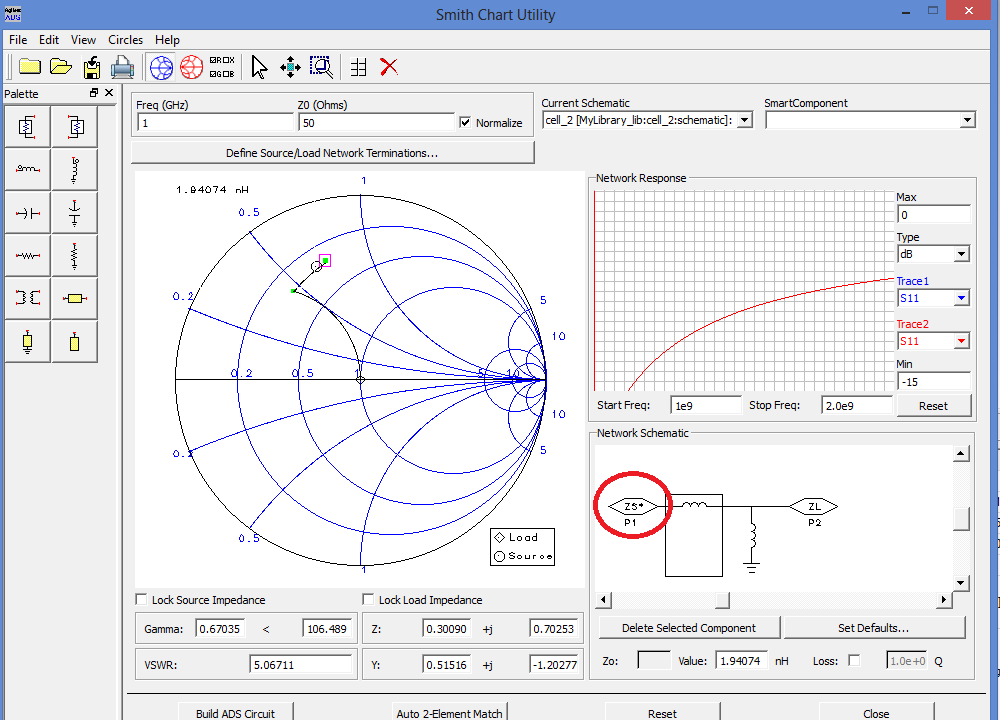Impedance using Network analyser and Agilent ADS
I have Agilent ADS as a software tool to calculate impedance. Should I put R+j*X in Agilent ADS Smith chart utility or a conjugate of it (R-j*X).
Please see how the Smith chart utility screen. It already wants to match Zs* to Zl.

Zs=50 Ohm and conjg{Zs}=50 Ohm..
What is the problem? Enter the value and match it..
If I change sides so , Zl = 50 Ohms. and Zs= 25+j60 (My measurement from Network analyzer), is it the impedance of the system or is it the conjugate that i should match to?
I get a reading of 52+j*73 from Network analyser , now should i Match 52+j*73 value to 50 OHms or 52-j*73?
You should match Zs*=52-j*73 to 50Ohm.
Wiki also has more details on using Smith Charts.
http://en.m.wikipedia.org/wiki/Smith...ted_components
Thanks for your replies. I found the answer.
In a smith chart tool, if we are moving from load to source of 50 Ohms , then we take a conjugate of destination point i.e. Source 50+j*0....
If we are moving from source of 50 Ohms to Load , we have to take a conjugate of load impedance and match it to that value.
In ADS Smith chart tool, when i enter values of Zs=50+j*0 and Zl= 52+j*73, the arc moves from load to source, and that is why Zs is written as Zs* and a conjugate of pure 50 Ohms ( 50+j*0) is still 50 ( 50-j*0)...
if your load is Zl=52 + J73, then if you were at the load looking back to the source, you should see 52 - J73. In that way the series reactance will be +J73 - j73 = 0, and your load resistance will match the source resistance for maximum power transfer.
